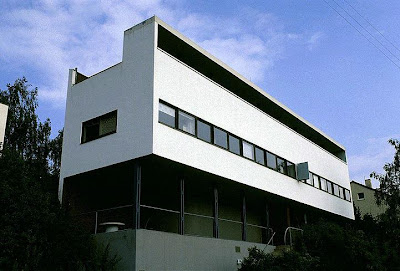 So, I was asked to rant about "form follows function" on the comments on Bad Catholic, a superlative blog that I follow, and I did. Apologies to everyone who had to scroll past my unexpectedly long post. I wanted to include pictures, so I will write about it here, mostly from cutting and pasting my comment and embellishing it. It is, after all, in my time period of choice.
So, I was asked to rant about "form follows function" on the comments on Bad Catholic, a superlative blog that I follow, and I did. Apologies to everyone who had to scroll past my unexpectedly long post. I wanted to include pictures, so I will write about it here, mostly from cutting and pasting my comment and embellishing it. It is, after all, in my time period of choice.Form follows function.
The phrase was coined by Louis Sullivan, considered the father of modern architecture. Before you judge the man too harshly, know that he didn't design what we consider "modern" architecture, but rather, a new type of building based on the ability of steel beams to soar, with exterior decorations added to emphasize height, and the function of the building, rather than following the old style of stone courses for each story from when the bricks actually did the work of holding up the building.
He was quite the rebel in 1890s Chicago, and the most (in)famous student of his style is Frank Lloyd Wright. Despite his abrasive personality, he made some gorgeous buildings, far more ornately decorated than the traditional buildings he moved away from. It really looked like art deco and art nouveau, only forty years early. All the decorations framed functional aspects - receding arches and solar patterns around doors, marble everything on banks, vertical courses of stone zooming up between the windows of skyscrapers. My favorite thing he did was take classical elements, like a doric column, and used its form and proportions on the entire building, with a sturdy base, "fluted" sides, and a course of decorative stone on top.
Observe the vertical lines of this building, and the column design.

In this detail, you can really see the way the surface looks like a steel skyscraper frame, only carved. The lines draw the eyes upward.

And capping off the building, look at this cornice!

One of his most famous buildings was the Transportation Building at the 1893 Chicago World's Fair. He refused to follow the beaux arts style that the architects agreed upon, and designed what basically looks like an art deco train station. Apparently it was painted with reds and golds radiating out from the arch - it must have been glorious.

Not that beaux arts isn't awesome as well. In fact, it is one of my favorite styles. An example of beaux arts construction from the fair was the Fine Arts Building, which happens to be the only building still standing today (in order to get insurance for all the art, they had to build a real building, not a temporary facade). It is now the Chicago Museum of Science and Industry, and words cannot express how much I want to go there! Note the classical proportions and features. Truly beautiful.

Speaking of which, beaux arts also has its skyscrapers. The Flatiron Building in NYC is a nice example. It looks like a blade of awesome thrust into the city. Note how the courses of stonework run horizontally under the windows. That is just a facade of stone, not part of the floor, but it is a holdover from Renaissance architecture. Sullivan thought leaving it on there stopped the eye in its upward journey, so he changed his stonework to vertical. Again, a facade, but one that follows the building's skeleton, and makes the skyscraper look taller. I like them both, but this clearly illustrates "form follows function".

Sullivan was very into using the Golden Ratio and form, unity, harmony (both within the design and with its surroundings), and decoration - all that stuff that architects forgot soon after that...
Enter communism. The internationalist movements of the late 19th and early 20th centuries were trying to find a style of architecture with no national flavor. Many of Sullivan's students and adherents were into that too, so they started stripping off aesthetic elements to achieve some kind of stylistic unity. This nonsense reached its peak in the 1930-60s, with old buildings being demolished and replaced by monolithic cement and glass skyscrapers. They believed that form was secondary to function, that once you got a building to do what a building does (hold furniture and people, keep out the weather) you can stop, no matter how it looks. Decorating it was aspirational and terribly bourgeois. Some of them went so far as to leave all the "functional" elements, like ductwork, exposed, claiming that as an aesthetic. The really ironic thing is that exposed ductwork is hard to keep clean, huge glass walls bleed heat and rack up huge heating and cooling bills, and flat roofs leak. These buildings are not functional at all - their very banality actually hinders their function. So much for integrity. By any measure of beauty, these modern buildings failed, because the ideal behind them was to erase humanity, not to uplift it.
In this one, you can see how it resembles Sullivan skyscraper, only plain. It actually looks older, because it has the reek of dingy bureaucracy about it.

For a more egregious example, check this out:

Need that flavor out of your mouth? Here's an image search of Sullivan's work. And here's some beaux arts. And what the hey - a little art nouveau and art deco. Enjoy
